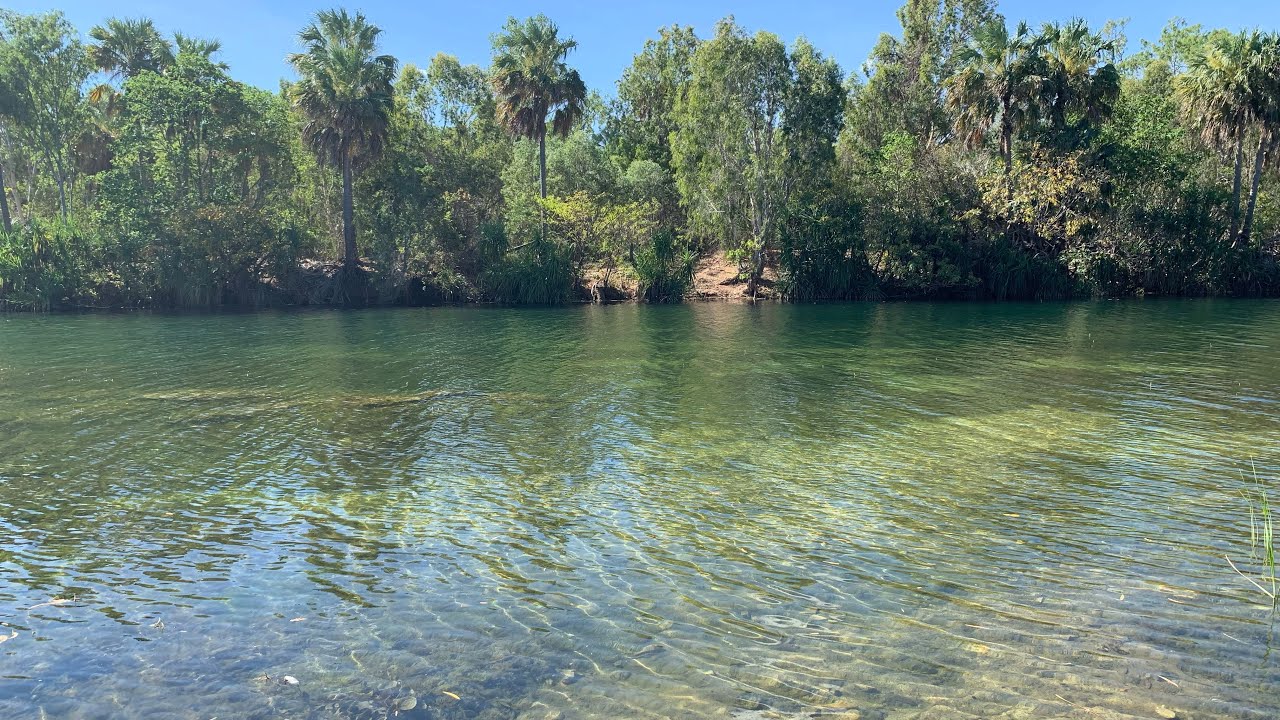Roper River

The Roper River is a large, perennial river that runs through the Katherine region of Australia’s Northern Territory. Fifteen tributaries flow into the river, including the Chambers, Strangways, Jalboi, Hodgson, and Wilton Rivers. The river flows as a lifeline, not only nourishing the land but also enriching it with a deep cultural legacy. For countless generations, Indigenous peoples have called the banks of the Roper River home, weaving stories, traditions, and connections that have shaped the identity of this timeless waterway. In this exploration, we delve into the cultural significance of the Roper River, unraveling the threads of history, spirituality, and community that bind together the diverse peoples who have inhabited its shores.
Honoring Ancestral Connections:
To understand the cultural importance of the Roper River, we must first acknowledge its role as a spiritual and ancestral landscape for Indigenous peoples. For millennia, the river has served as more than just a source of water—it has been a sacred pathway, connecting generations past and present to the land, water, and sky.
Indigenous Dreamtime stories speak of the creation of the Roper River by ancestral beings who shaped the land and imbued it with spiritual significance. These stories are passed down through oral traditions, connecting individuals and communities to their ancestors and the timeless wisdom of the land.
For Indigenous peoples such as the Mangarrayi, Wardaman, and Nungarrayi, who have maintained a deep connection to the Roper River for thousands of years, its waters hold memories, teachings, and ceremonies that are integral to their cultural identity. From hunting and gathering along its banks to performing sacred rituals and ceremonies, the river is a central element of daily life and spiritual practice.
Preserving Traditional Knowledge:
Beyond its spiritual significance, the Roper River plays a vital role in preserving traditional Indigenous knowledge and practices. Indigenous peoples have developed intricate systems of land management, resource utilization, and ecological stewardship that have sustained their communities for millennia.
Through intimate observation of the river’s rhythms, seasons, and natural cycles, Indigenous peoples have acquired a profound understanding of the land and its inhabitants. Traditional knowledge passed down through generations informs sustainable practices such as fishing, hunting, and land cultivation, ensuring the continued health and vitality of the river ecosystem.
In recent years, there has been a growing recognition of the value of Indigenous ecological knowledge in informing contemporary approaches to environmental management and conservation. Collaborative efforts between Indigenous communities, government agencies, and conservation organizations aim to integrate traditional practices and perspectives into broader strategies for safeguarding the health of the Roper River and its surrounding landscapes.
Fostering Cultural Continuity:
The cultural importance of the Roper River extends beyond its role as a physical and spiritual landscape—it is also a catalyst for fostering cultural continuity and resilience among Indigenous communities. Despite the challenges of colonization, displacement, and social change, Indigenous peoples have maintained a strong connection to their ancestral lands and waters, drawing strength and inspiration from the traditions and teachings passed down through generations.
Cultural practices such as storytelling, art, music, and dance serve as powerful mediums for expressing Indigenous identity and preserving cultural heritage. Along the banks of the Roper River, these traditions come to life, providing a vibrant tapestry of storytelling, song, and ceremony that celebrates the resilience and diversity of Indigenous cultures.
In addition to preserving traditional practices, the Roper River also serves as a space for intergenerational learning and community gathering. Elders pass down knowledge and wisdom to younger generations, ensuring that cultural traditions remain alive and relevant in a rapidly changing world. Community events, festivals, and gatherings along the river provide opportunities for people to come together, strengthen bonds, and celebrate shared heritage.
Promoting Cultural Tourism and Education:
As awareness of the cultural significance of the Roper River grows, so too does interest in cultural tourism and education opportunities that highlight Indigenous perspectives and experiences. Guided tours, cultural exchanges, and interpretive programs offer visitors the chance to learn from Indigenous guides, explore sacred sites, and gain a deeper understanding of the land and its people.
Cultural tourism initiatives not only provide economic opportunities for Indigenous communities but also serve as a platform for promoting cross-cultural understanding and reconciliation. By sharing their stories, traditions, and connection to the land, Indigenous peoples invite visitors to embark on a journey of discovery, fostering mutual respect, appreciation, and empathy.
Conclusion:
In conclusion, the Roper River stands as a testament to the enduring cultural legacy of Australia’s Indigenous peoples. As more people come to recognize and appreciate its significance, the river serves as a beacon of cultural resilience, connecting past, present, and future generations in a shared celebration of heritage and identity.
By honoring the spiritual, ecological, and social importance of the Roper River, we not only pay tribute to the Indigenous peoples who have stewarded its waters for millennia but also reaffirm our collective responsibility to protect and preserve the cultural diversity and richness of our world. As we navigate the currents of change, may the cultural significance of the Roper continue to inspire, educate, and unite us in a shared journey of cultural understanding and appreciation.




